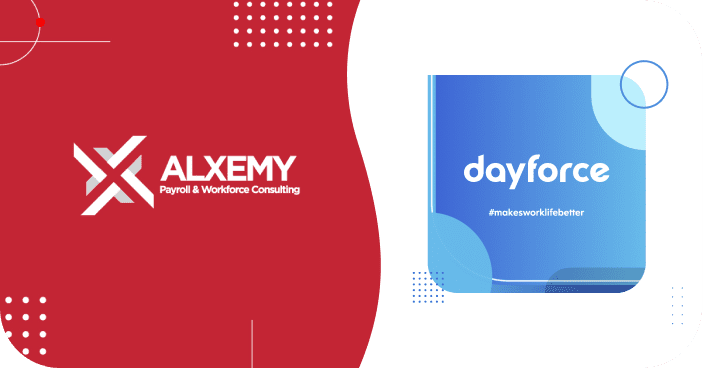
Not less than 4 weeks paid annual holidays

When simple words cause big problems
“Not less than 4 weeks’ paid annual holidays.” – How do these eight simple words cause so much confusion?
These eight words are taken from section 16 of the New Zealand Holidays Act.
The complete section reads:
(1) After the end of each completed 12 months of continuous employment, an employee is entitled to not less than 4 weeks’ of paid annual holidays.
Seems simple, eh? Maybe not so much.
Truth about 4 weeks’ leave…
- “Accrued leave” isn’t in the Holidays Act – only entitlement is.
- Unpaid leave can still count as continuous employment.
- ACC injury leave counts, even without working all year.
- Leave in hours may not equal 4 full weeks of time.
- If there’s no agreement, a Labour Inspector may step in.
“What looks simple in law often becomes complex in payroll.”
What’s missing? The myth of “accrued leave”
Let’s start with what isn’t in Section 16: accrued leave.
If you searched the Holidays Act 2003 for the terms “accrued leave” or “leave accrual”, you’d come up empty. Neither term appears in the legislation.
Yet most payroll systems use these terms to describe leave earned during the first 12 months of employment – and in every 12-month period after that. Some systems even show two leave balances:
- Leave accrued
- Leave entitled
But here’s the thing: only “leave entitled” is legally recognised. “Leave accrued” is a system construct – not a legislative one.
“Accrued leave might be in your system, but it’s not in the law.”
So what’s the problem?
If there’s no mention of leave accrual in legislation, but your system displays leave accrued, how do you know it’s correct?
And if leave is accruing – how is it accruing? In weeks? In most systems, leave accrual is in hours, sometimes in days, and possibly in weeks if you’re lucky.
How does this accrual work for employees with varied hours? Is it based on hours worked – also known as proportional accrual?
And how does that get translated into a 4-week entitlement once the 12-month mark is reached?
Understanding “continuous employment”
Let’s go back to Section 16 – “each completed 12 months of continuous employment.”
Let’s review what continuous employment means.
At first glance, it seems simple: work 12 months, get 4 weeks of leave. Easy, eh? Yeah, nah.
What happens if an employee takes time off during those 12 months? Is employment still considered continuous? In most cases, yes.
Even some types of unpaid leave are considered continuous employment – think unpaid sick leave, unpaid bereavement leave, unpaid jury duty, etc.
Only unpaid leave not related to these categories, and greater than one week, is excluded from the definition of continuous employment.
So what does your system do in those cases?
- Does it push out the leave entitlement date (anniversary date)?
- Reduce the divisor?
- Or… does it do nothing at all?
The ACC scenario: an easy one to miss
Here’s one to look out for: unpaid injury leave while an employee is receiving weekly compensation from ACC.
If an employee returns after a period of injury leave, however long, the time away is still considered continuous employment.
That means the employee may be entitled to 4 weeks of annual leave, even if they haven’t worked at all during the past 12 months.
As the company isn’t paying the employee, and the role may have been filled by someone else, this often drops off the radar. Confusion and frustration follow when the employee returns and claims their 4 weeks of leave.
Surely they’re not entitled? Oh yes, they are.
But what is “4 weeks of leave” really?
Here’s the big question – what exactly does 4 weeks of leave mean in your system?
Is the balance stored in hours or in weeks?
If it’s in hours, how do you know the correct number of hours have been converted into the equivalent of 4 weeks?
Have the employee’s regular hours changed in those 12 months?
- Has a full-time employee gone part-time?
- Has a part-time employee gone full-time?
Are the hours now more or less than the equivalent of 4 weeks?
So what’s the problem?
If there’s no mention of leave accrual in legislation, but your system displays leave accrued, how do you know it’s correct?
And if leave is accruing – how is it accruing? In weeks? In most systems, leave accrual is in hours, sometimes in days, and possibly in weeks if you’re lucky.
How does this accrual work for employees with varied hours? Is it based on hours worked – also known as proportional accrual?
And how does that get translated into a 4-week entitlement once the 12-month mark is reached?
“If your system’s logic hasn’t been reviewed in years, now’s the time to check before someone else does.”
Section 17: Agreement (or disagreement)
Section 17 of the Holidays Act explains how the entitlement to 4 weeks’ annual holidays can be met. The recommended approach? Employer and employee should agree on how the 4-week entitlement is fulfilled.
But who actually has those conversations?
In most cases, it’s left up to the payroll system to define the 4 weeks of annual holidays. But is that definition correct? Are you relying on a flawed system?
What happens when there’s no agreement?
Even worse, under Section 17(2), if the employer and employee can’t agree, then a Labour Inspector can make the determination.
Yikes.
The Labour Inspector may also refer to Section 12 of the Act, which defines an otherwise working day. Are these otherwise working days accurately recorded in your time and attendance system? If not, then the door is open for the Labour Inspector to dig even deeper – something you want to avoid.
Final note: payment is a separate issue
And don’t get me started on payment for those 4 week, that’s a subject for another article.
So…eight simple words that cause so much consternation and angst – not less than 4 weeks paid annual holidays.
So… is your system compliant?
Is your system compliant? The question isn’t whether you trust your system – it’s whether your system actually aligns with the Holidays Act.
A quick compliance audit can:
- Review your accrual settings
- Check anniversary date handling
- Confirm how “4 weeks” is calculated in real-world terms
→ Ask us about a Holidays Act audit today.
Written By: Dawn Grant
Key Takeaways:
- Accrued leave is not legislated: It’s a payroll convention, not a legal standard. Leave entitlement only legally exists after 12 months of continuous employment.
- Continuous employment includes more than you think: Many types of unpaid leave – including sick, bereavement, jury, and injury leave don’t break the 12-month cycle.
- Systems often get it wrong: Leave balances in hours or days may not equate correctly to 4 weeks, especially for variable-hour or part-time employees.
- Disagreements can escalate: If no agreement is reached between employer and employee, a Labour Inspector can step in – potentially exposing system flaws.
- An audit can help: Regular compliance checks are essential to avoid future issues and ensure employees are getting their full entitlements.












